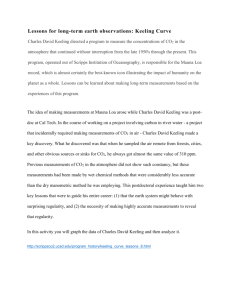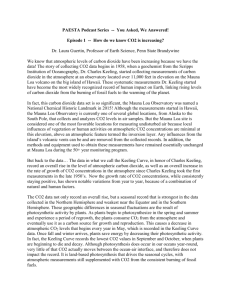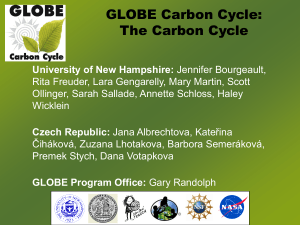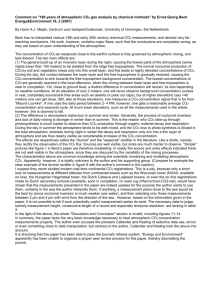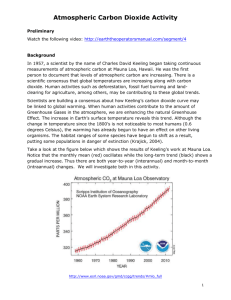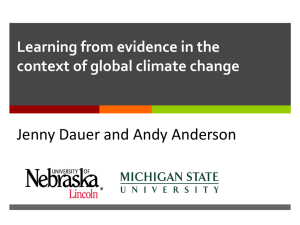Andy-Jacobson-email
advertisement
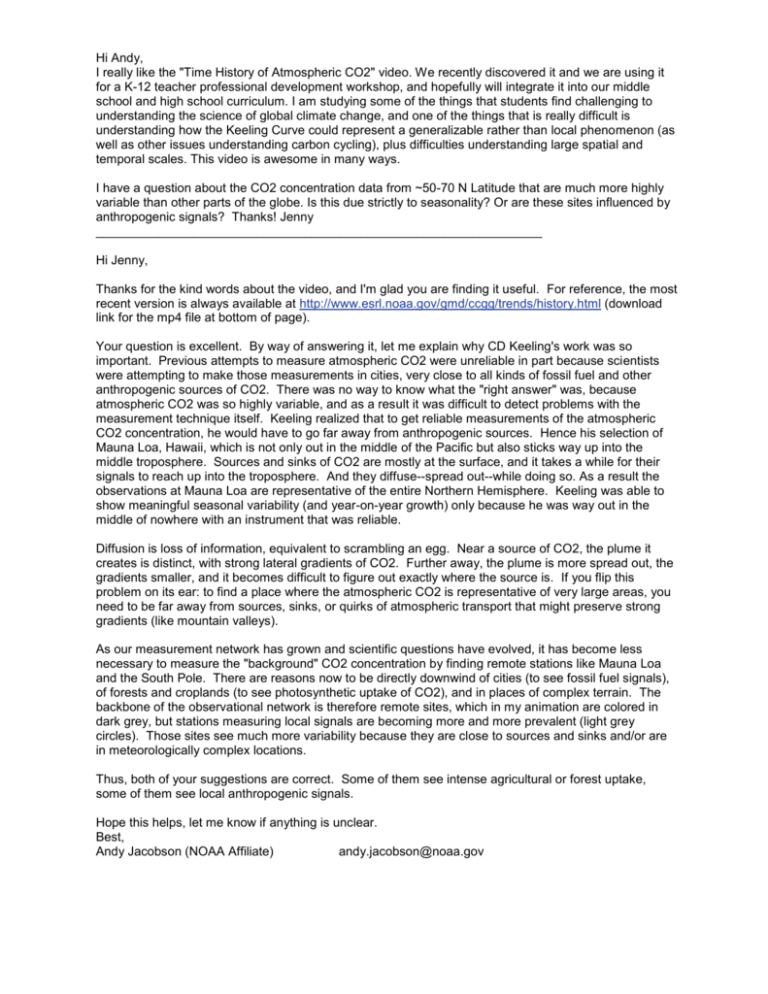
Hi Andy, I really like the "Time History of Atmospheric CO2" video. We recently discovered it and we are using it for a K-12 teacher professional development workshop, and hopefully will integrate it into our middle school and high school curriculum. I am studying some of the things that students find challenging to understanding the science of global climate change, and one of the things that is really difficult is understanding how the Keeling Curve could represent a generalizable rather than local phenomenon (as well as other issues understanding carbon cycling), plus difficulties understanding large spatial and temporal scales. This video is awesome in many ways. I have a question about the CO2 concentration data from ~50-70 N Latitude that are much more highly variable than other parts of the globe. Is this due strictly to seasonality? Or are these sites influenced by anthropogenic signals? Thanks! Jenny ________________________________________________________________ Hi Jenny, Thanks for the kind words about the video, and I'm glad you are finding it useful. For reference, the most recent version is always available at http://www.esrl.noaa.gov/gmd/ccgg/trends/history.html (download link for the mp4 file at bottom of page). Your question is excellent. By way of answering it, let me explain why CD Keeling's work was so important. Previous attempts to measure atmospheric CO2 were unreliable in part because scientists were attempting to make those measurements in cities, very close to all kinds of fossil fuel and other anthropogenic sources of CO2. There was no way to know what the "right answer" was, because atmospheric CO2 was so highly variable, and as a result it was difficult to detect problems with the measurement technique itself. Keeling realized that to get reliable measurements of the atmospheric CO2 concentration, he would have to go far away from anthropogenic sources. Hence his selection of Mauna Loa, Hawaii, which is not only out in the middle of the Pacific but also sticks way up into the middle troposphere. Sources and sinks of CO2 are mostly at the surface, and it takes a while for their signals to reach up into the troposphere. And they diffuse--spread out--while doing so. As a result the observations at Mauna Loa are representative of the entire Northern Hemisphere. Keeling was able to show meaningful seasonal variability (and year-on-year growth) only because he was way out in the middle of nowhere with an instrument that was reliable. Diffusion is loss of information, equivalent to scrambling an egg. Near a source of CO2, the plume it creates is distinct, with strong lateral gradients of CO2. Further away, the plume is more spread out, the gradients smaller, and it becomes difficult to figure out exactly where the source is. If you flip this problem on its ear: to find a place where the atmospheric CO2 is representative of very large areas, you need to be far away from sources, sinks, or quirks of atmospheric transport that might preserve strong gradients (like mountain valleys). As our measurement network has grown and scientific questions have evolved, it has become less necessary to measure the "background" CO2 concentration by finding remote stations like Mauna Loa and the South Pole. There are reasons now to be directly downwind of cities (to see fossil fuel signals), of forests and croplands (to see photosynthetic uptake of CO2), and in places of complex terrain. The backbone of the observational network is therefore remote sites, which in my animation are colored in dark grey, but stations measuring local signals are becoming more and more prevalent (light grey circles). Those sites see much more variability because they are close to sources and sinks and/or are in meteorologically complex locations. Thus, both of your suggestions are correct. Some of them see intense agricultural or forest uptake, some of them see local anthropogenic signals. Hope this helps, let me know if anything is unclear. Best, Andy Jacobson (NOAA Affiliate) andy.jacobson@noaa.gov
